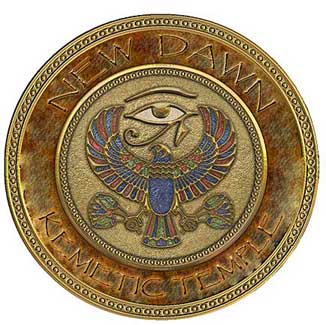|
|
|


~Dr. Susan L. Wilson~
A really neat, off the beaten track, site to visit is Bani
Hasan (also spelled Beni Hasan). Located in Middle Egypt near to Al-Minya, Bani
Hasan is one of the few Middle Kingdom sites (ca. 2040 – 1782 BCE, Dynasties
11 and 12) that survived the massive reconstruction of the New Kingdom. It is
a full day’s excursion from Cairo (about 4 hours by train then a short
drive to the site). Another great option, is to stop for a night in Al-Minya
when traveling by train between Cairo and Luxor. Spend the night and enjoy the
beauty of Al-Minya, the closest city to Bani Hasan. Before going, you should
make arrangements with a travel agent for a tour guide and transportation to
Bani Hasan and other sites in the area. This is another one of the places where
you will need fast speed film because no flashes are allowed within the tombs.
Al-Minya is a beautiful city that has had little tourist traffic over the past
decade, so you won’t find the usual kiosks so prevalent at traditional
tourist sites. Quiet and easy-going, Al-Minya offers a serene example of traditional
life along the Nile. Here, you will feel life away from the hustle and bustle
of the big city and away from the tourist centers visited my most guests to
Egypt. Al-Minya has one of the loveliest green areas along the river you will
find anywhere in Egypt. Take time to sit and view river traffic or take a short
stroll along the river’s edge. You can also find places to get traditional
Egyptian food in the city proper.
To get to Bani Hasan from Al-Minya, you will need to take a car, taxi, or bus for approximately 20 km to Abu Qurqas where you will get a ferry for the East Bank and Bani Hasan (this is why you need to make prior arrangements through a travel agent).
The ferry takes about 20-30 minutes to cross from the landing on the west bank to the east. The landing site is located not too far from the Rest House where you will start your climb to the tombs overlooking the valley. Don’t forget to take some water with you and to wear good walking shoes. The vertical climb from the rest house is listed as being about 80 meters. Broad, deep limestone steps lead you to the distant tombs on the cliff face (probably only about on-half mile away, but it looks further).
The area is named for the Bani Hasan Arabs who settled here during the 18th century. In ancient times, it was the Necropolis of the Governors of the Oryx Nome. All of the tombs of Bani Hasan are Middle Kingdom, 11 and 12 Dynasties. The short version of Middle Kingdom history is as follows. The Middle Kingdom follows the First Intermediate Period, a time of disunity throughout Egypt. Dynasty 11 is generally listed as beginning in the First Intermediate Period. The Middle Kingdom, hallmarked by the reunification of Egypt, occurred in the 11th Dynasty under the rule of Mentuhotep I (sometimes these kings are shifted, with Mentuhotep I referred to as Mentuhotep II, and so on), who was the first king of that dynasty. After a series of battles with northern rulers, Mentuhotep I gained control of the whole of Egypt by the 39th year of his reign. Apparently, the 12th Dynasty began when Mentuhotep III (Mentuhotep IV) was overthrown by Amenemhet I, (probably the former’s vizier), who ruled for 29 years. Under Amenemhet, the Theban god Amun began a rise to prominence. Prior to his murder, Amenemhet shared his rule with his son Senusret I for the last ten years of his reign. Later in the 12th Dynasty, Amenemhet III pushed south beyond Egypt’s boundaries to protect the southern border and safeguard access to trade routes and the gold in Nubia. The Middle Kingdom is characterized by being a highpoint in Egyptian literature and a revival in the quality of art.
Bani Hasan has some 39 tomb-chapels. Most are not decorated, so you don’t go to these. In front of the tombs are the shaft graves of officials and servants, referred to as chapels rather than tombs since the burials were in the shafts in the rock-cut chambers. The tombs of Bani Hasan fall into three types.
Most numerous are tombs of the 11th Dynasty with un-columned
single rooms and a false door on the inner wall.
Second, are the tombs with the delicately carved lotus bud fluted columns. Many
of the columns were cut away sometime in the past, so there is only the top
part "hanging" from the ceiling.
Third, the 12th Dynasty tombs consist of an ant-chamber with two columns and
an inner room with burial shafts in the floor.
The main group of tombs is decorated with paintings of prayers written to Osiris
and Anubis, but lacks depiction of the gods. The wall murals in Bani Hasan are
among the first decorated with brush and paint only, a departure from the older
styled painted-relief sculptures. You can also find full frontal face illustrations,
which are different from older paintings. The paintings are well preserved and
the colors are outstanding. One of the most interesting aspects of Bani Hasan
paintings is the representation of recreation. My personal favorites are depictions
of wrestling, dancing, and acrobatics, but you can also find juggling. Many
details of everyday life also can be found on the tomb walls: fishing, hunting,
weaving, war, bird trapping, voyages, and animal and bird scenes. It is one
place where you can look at the paintings and actually feel as though you are
experiencing just a little of real life in the Nile Valley some 4,000 years
ago.